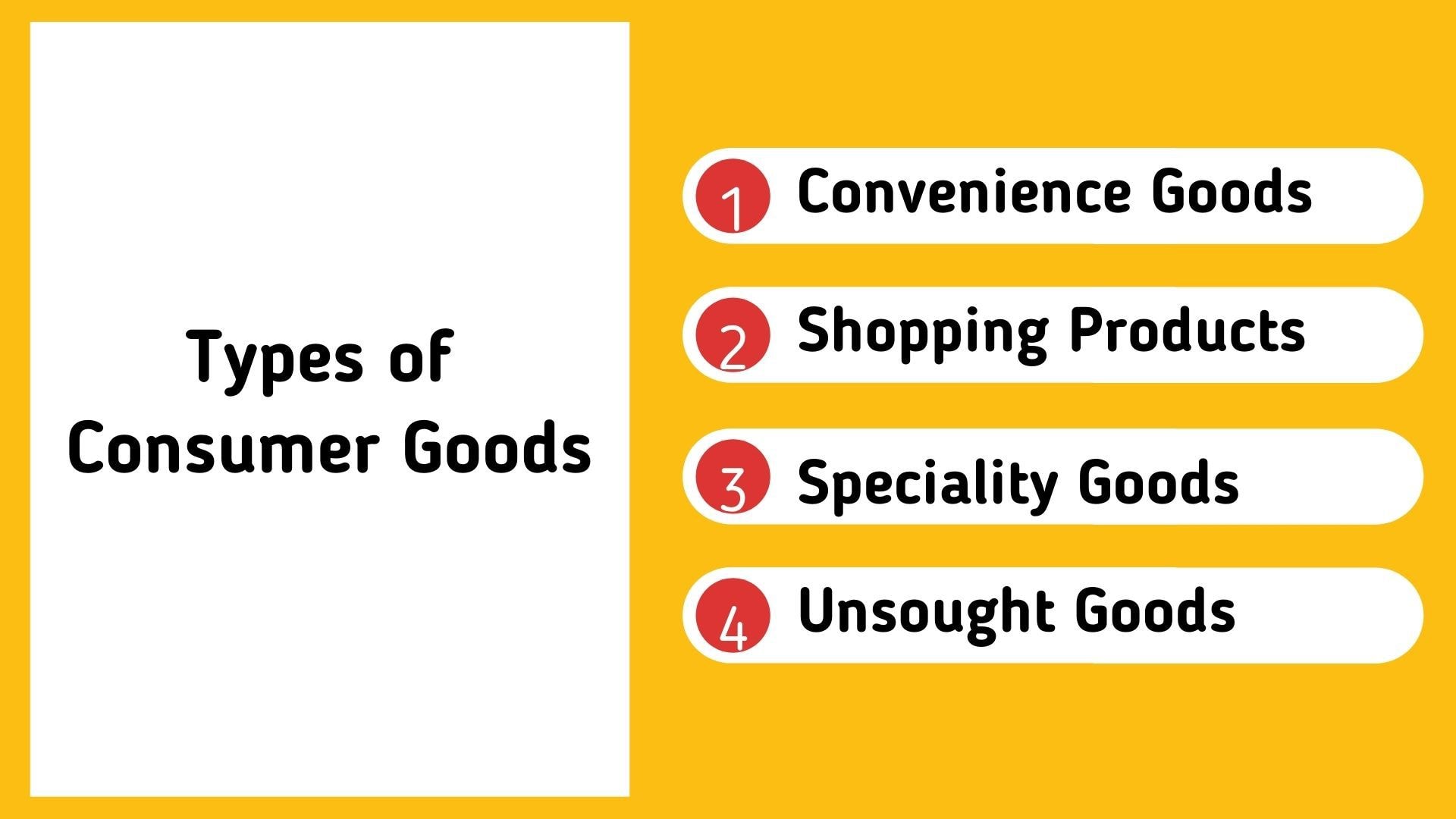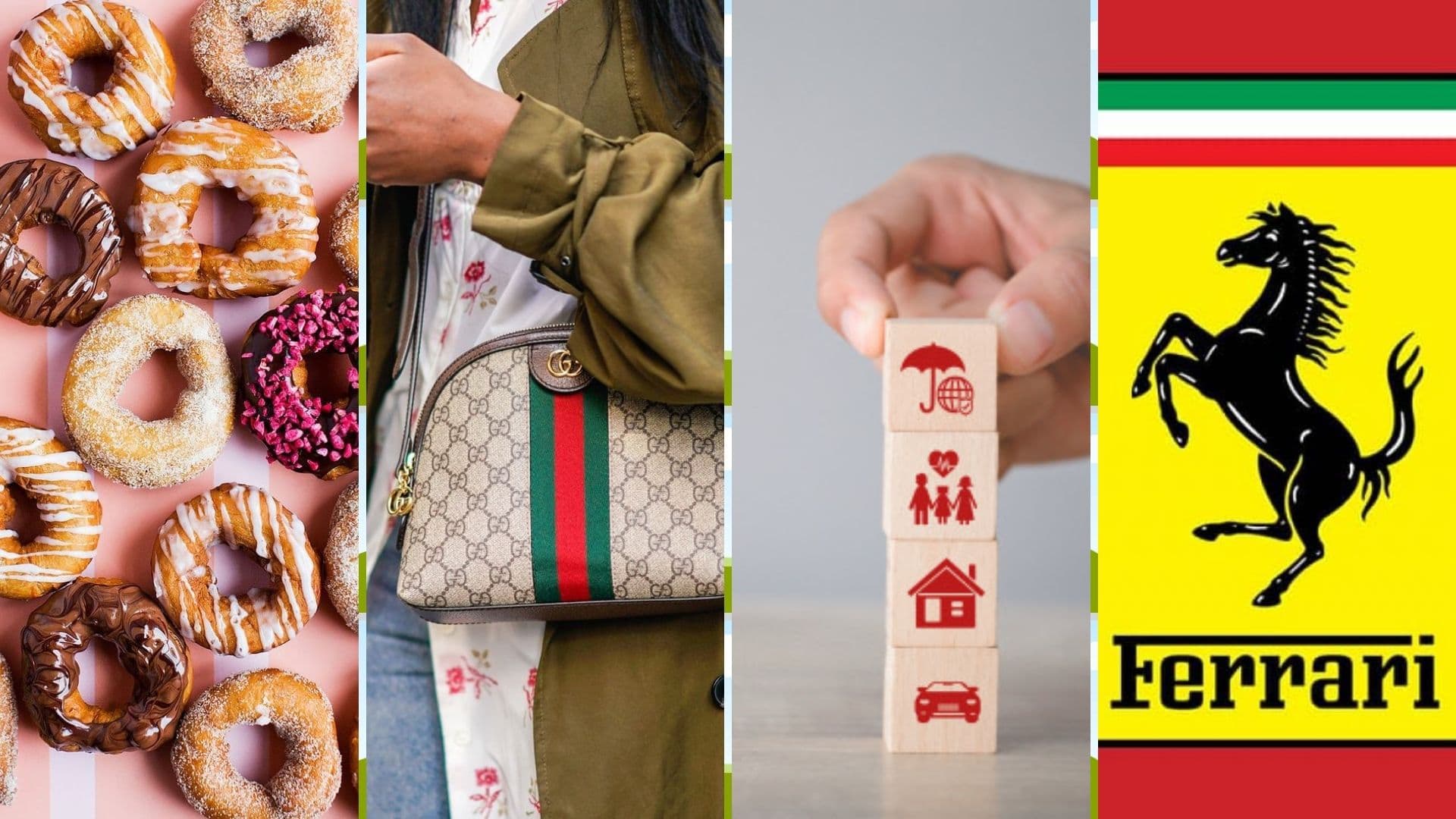Table of Contents
What Are Consumer Goods?
Consumer goods are the products that an average user purchases for self-consumption. They are also popularly known as final goods or consumer products because, in the life-cycle of a product, the last stage comes when the goods-consumer consumes it.
This could be in the form of food, clothes, transportation, entertainment, or any other items that are used by consumers for their day-to-day activities. These products are generally bought with the intention of fulfilling an immediate need or desire.
Key Takeaways!
- Consumer goods are products that an average user purchases for self-consumption.
- They are also known as final goods or consumer products because, in the life-cycle of a product, the last stage comes when they are consumed by the end-user.
- Examples of consumer goods include food, clothing, household appliances, and entertainment items.
- The key feature of these products is that they are purchased with the intention of fulfilling an immediate need or desire.
Types of Consumer Goods
There are four significant types of consumer goods in the market. These goods have unique characteristics that distinguish them from each other.
These four types of consumer goods are Convenience, Specialty, Shopping, and Unsought goods.
1. Convenience Goods
The word convenience is self-explanatory as it means that little to no effort is put to acquire the goods from the market.
These goods are easily accessible in the market, and the rate of purchase is quite frequent. For instance, Toothpaste, toilet paper, drinks, food, deodorants, consumer packaged goods, etc. The highlighting characteristics are as follows:
- Not durable
- Easy availability
- The rate of purchase is frequent
- Relatively low priced
2. Shopping Goods
The purchase rate in the case of shopping products is not as frequent as in the case of convenience goods. They are also not readily available in the market.
So, as a result, consumers take time to conclude whether to go ahead with the purchase or not. For instance, Clothing, Mobile phones, and sofa sets are all shopping goods that are consumed on local as well as global scale. The highlighting characteristics are as follows:
- They are durable goods
- Comparable to related goods
- The rate of purchase is infrequent
- Opportunity cost is high
- Less availability
3. Speciality Goods
The consumers’ decision time during the purchase of specialty goods is minimum. Since specialty goods have rare features and unique designs and they don’t have homogenous products.
For instance, designer clothing, high specification laptop, sports car, rare ornaments, etc. The brand image in the market is the USP of these products like Ferrari, Gucci, etc. The highlighting characteristics are as follows:
- Goods are durable
- They are rare to find
- The purchase rate is infrequent
- They are extravagantly priced
4. Unsought Goods
These kinds of products can be ranked from old, outdated goods to the new innovative prototype. Consumers don’t remember these products at the top of their heads, and they are very infrequently bought from the market.
The unique property of this good is that the benefits are not instantly derived from the product. For instance, Life Insurance is the most popular unsought good in the market. The highlighting characteristics are as follows:
- The rate of purchase is infrequent
- The consumers are unaware of the features of the product
- Lack of desire
- Bought to avoid an undesirable outcome
Consumer Goods vs Intermediate Goods
Consumer goods are not to be confused with intermediate goods. The intermediate good is those goods whose life span is still incomplete.
These intermediate goods are used further down the line to manufacture final goods.
For example, copper is an intermediate good as it is utilized to manufacture bowls and trays which are the final products.
Consumer Goods vs Capital Goods
Capital goods are such products bought by a business entity to use that good to produce another good, and it is not meant for final consumption.
Whenever an average user purchases a good for self-consumption, it is known as consumer goods. They are also popularly known as final goods.
Consumer Goods Examples
The critical point to keep in mind is that consumer goods are meant for final consumption, and no business entity is allowed to use consumer goods for further production of goods. Some of the top consumer goods examples include-
1. Doughnuts
This is a classic example of convenience consumer goods.
The purchase rate for this product is very high, and the availability of this product from a local store is very high.
The doughnuts’ other characteristics are that it is a low-priced product, and it falls under the category of non-durable goods.
2. Ferrari
The Ferrari sports car is an excellent example of specialty goods.
The Ferrari sports car is expensive, unique, and durable, and the purchase rate is significantly low compared to convenient consumer goods.
It also doesn’t fall under the category of shopping goods as it is not a homogenous product. On the contrary, it is a heterogeneous product, and it cannot be matched with other sports cars as it has unique features.
3. Gucci Handbags
On similar lines with Ferrari Gucci is one of the top examples of specialty goods.
As the unique features of the handbag are not comparable with any other handbag on offer in the market. The handbag has unique designs that the other handbag brands cannot provide.
Hence, when a consumer likes that particular design from Gucci, then they will not switch loyalties.
On the flip side, convenient goods such as bread, butter, and basic mobile phones are almost indistinguishable.
4. Laptops
Laptops can be an example of either shopping goods or specialty goods depending on the price at which they are available and the specifications that they provide.
Laptops falling under the category of High-end laptops such as Google’s Pixelbook and Apple MacBook Pro are specialty goods. This is because they have one of a kind design and specifications that are not comparable to any laptops at the same price point.
The brand Apple has an operating system that is not available on other brands’ laptops. Hence, making it a specialty product.
On the contrary, low-end laptops can be put under the category of shopping goods since there is a wide range of products available at a lower price point with very few distinguishable features.
5. Prepaid Funeral
This is one of the excellent examples of unsought consumer goods. This is because consumers usually don’t buy these products with full-hearted willingness and desire.
They pay for the product as they are reluctant to face the adverse consequences that can occur.
For instance, a father pays for his funeral service in advance, fearing that his children might not be able to cover the expenses of their father’s funeral. So, the father pays for the service while he is alive.
So, we can say it makes it an unsought good as no immediate benefits are derived.
Marketing Consumer Goods
Consumer goods companies need to make sure their products are marketed in the right way to capture the attention of their target customers. In order to do so, they need to understand consumer behavior and confidence.
By understanding consumer behavior, companies can identify what triggers customer spending on different types of goods. This helps them develop strategies that can be used to increase sales for different types of goods.
Consumer confidence is another key factor that firms need to keep in mind. This means that they need to be transparent with customers about product prices, availability, and other aspects related to customer satisfaction.
Moreover, companies must also offer services such as free returns, warranties, after-sales support, and even discounts or promotions from time to time. This increases trust in the brand and encourages customers to keep buying from them.
Finally, companies can also use digital advertising tools such as influencer marketing, social media campaigns, and other strategies to reach out to different target audiences. By using these methods, firms can make sure their products are seen by the right set of people who are more likely to purchase from them.
Conclusion!
On a concluding note, we hope you would have understood that consumer good is the end result of production and manufacturing. The consumer can see these goods stocked on the store shelf. What are the basic consumer goods that you need in your day-to-day life?
FAQs
Q. What are Durable and Nondurable goods?
A. Consumer goods can also further be divided into durable and nondurable goods. Consumer durable goods are those goods that can be consumed by the user for extended periods. On the contrary, nondurable goods cannot be consumed after the first consumption. For instance, Mobile phones can be used for many years hence they are consumer durables, whereas bread cannot be used again after the consumer has eaten it.
Q. What are Fast Moving Consumer Goods?
A. They are one of the most considerable sections of consumer goods that are available in the market. Nondurable goods such as drinks and foods are comprised under this section. The most outstanding feature of this segment is that the movement of goods from producers to distributors and retailers to the final consumers is very rapid. This is the most lucrative section of consumer goods available in the market. Retailers and producers adore this segment as it has high shelf space turnover, and the rate of purchase is relatively high.
Q. How can companies optimize the supply chain for consumer goods?
A. Companies can optimize their supply chain operations by analyzing customer needs and preferences, using the latest technologies to streamline data collection, improving communication between different departments in the organization and partners, managing inventory efficiently, reducing lead times, optimizing transportation routes, and ensuring timely delivery of products. They can also use innovative marketing strategies such as promotions and discounts to drive demand for their products.
Liked this post? Check out the complete series on Marketing


Excellent article. Thanks for your articles.
Please write more….